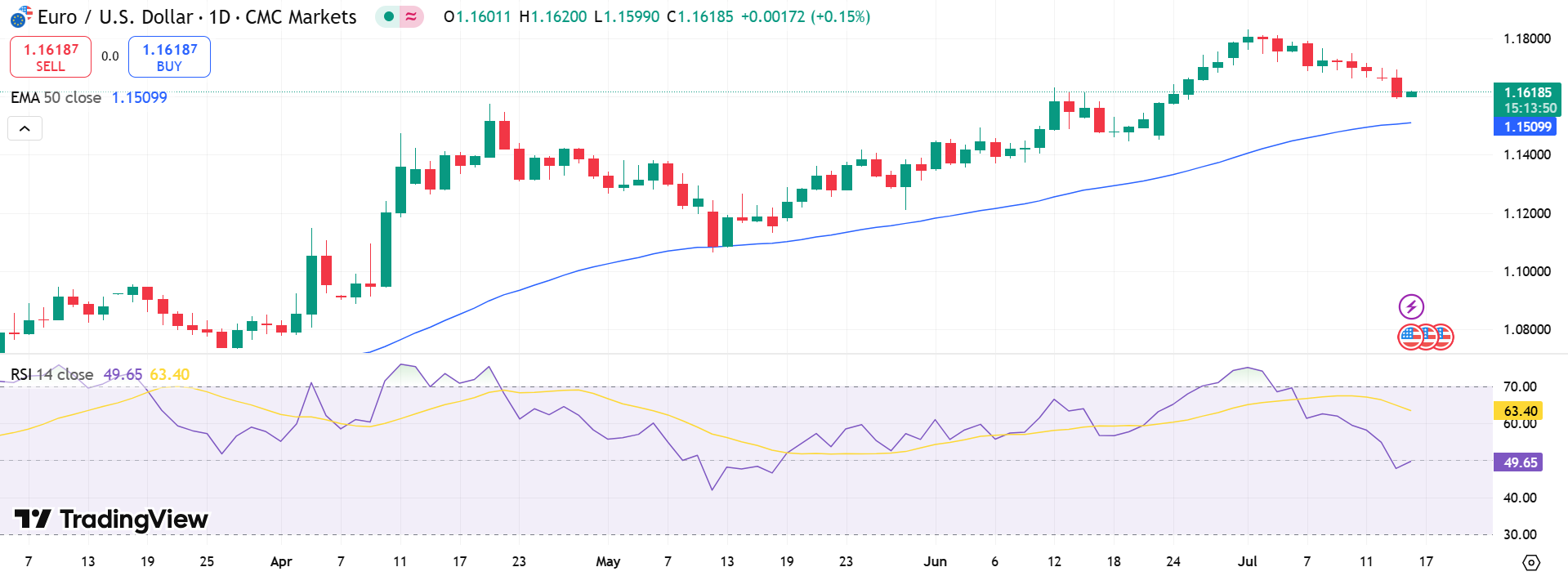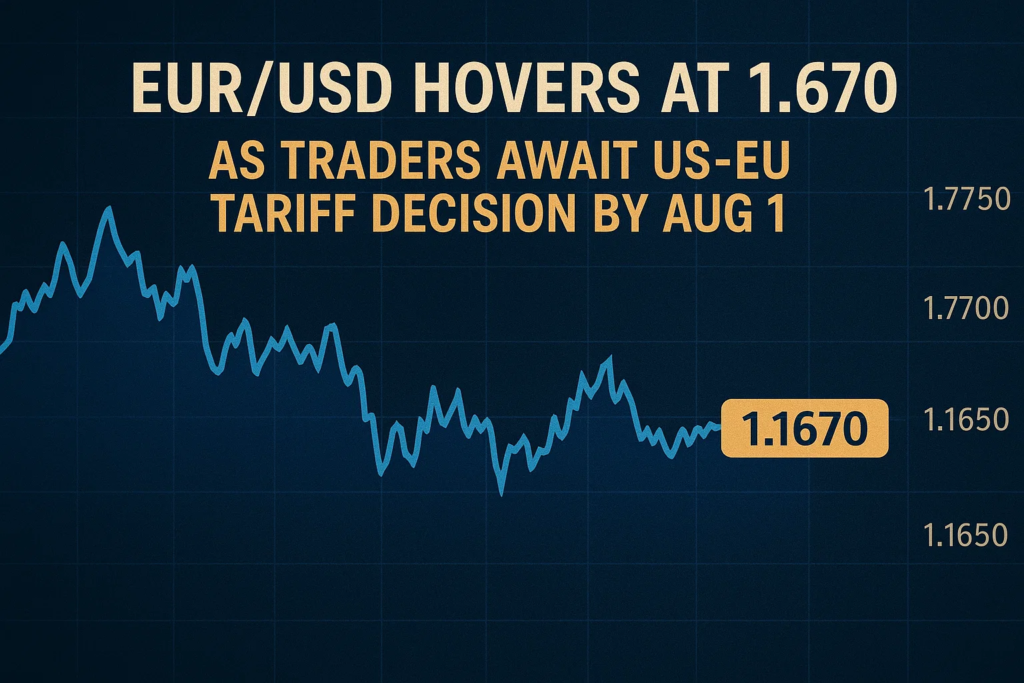The EUR/USD pair traded in a narrow range near 1.1670 during Tuesday’s Asian session, with market participants taking a cautious stance ahead of key developments in U.S.–EU trade negotiations. The subdued action reflects investor hesitation, as tariff decisions expected by August 1 could significantly sway market sentiment.
Despite recent softness, the euro has maintained relative resilience. The Relative Strength Index (RSI) at 55 suggests moderate bullish momentum, while the Average Directional Index (ADX) around 28 indicates a stable trend. Technical resistance remains overhead at 1.1830 (July 2025 high), with further barriers at the long-term peak of 1.1852. On the downside, support is firm at the 55-day SMA at 1.1457, followed by 1.1210 and the critical 1.1000 threshold.
Tariff Threats Weigh on Market Sentiment
Renewed trade jitters continue to weigh on the euro’s performance. After falling to a three-week low near 1.1650, EUR/USD has now declined for four consecutive sessions. The latest concern: the White House’s threat of 30% tariffs on European imports, compounding recent announcements of 25% tariffs on Japan and South Korea, and a steep 50% tariff on copper.
While the Biden administration has postponed any tariff decisions until August 1, the potential for a renewed trade war is keeping markets on edge.
Key risks driving caution:
- Trade tension resurgence between the U.S. and EU
- Possible inflationary impact of new tariffs
- Slower global growth expectations heading into Q3
These uncertainties have encouraged short-term caution, with investors waiting for more clarity before committing to directional positions.
Central Banks Signal Divergent Paths
Policy divergence between the Federal Reserve and the European Central Bank (ECB) remains a key driver for EUR/USD. Minutes from the Fed’s June meeting showed internal division: some members support immediate rate cuts, while others prefer a wait-and-see approach depending on inflation persistence.

Meanwhile, the ECB cut its Deposit Facility Rate to 2.00% in early June but indicated it will not move again without stronger evidence of weakening external demand.
Market positioning reflects this divergence:
- CFTC data (as of July 8):
- Euro speculative net longs > 120.5K contracts (highest since Dec 2023)
- Institutional net shorts > 177K contracts (multi-month highs)
- Total open interest rose to 806K contracts, third weekly increase
With both sides of the Atlantic facing economic crosswinds, EUR/USD may remain range-bound until trade and policy signals become clearer.


